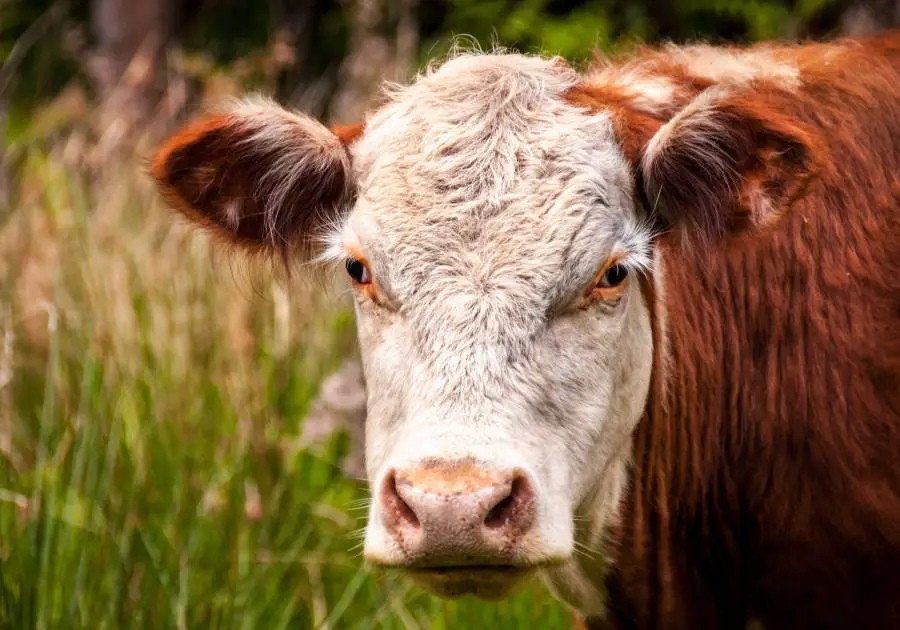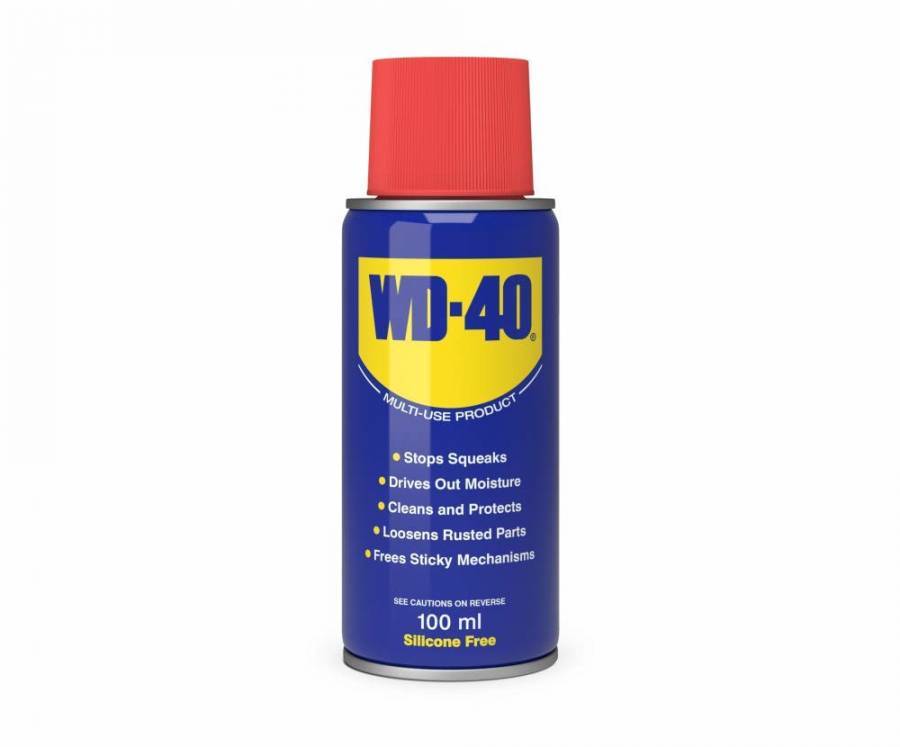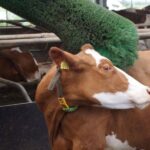Table of Contents
Pink eye, also known as Infectious Bovine Keratoconjunctivitis (IBK), is an all-season eye condition that affects all cattle breeds.

The contagious ocular disease is caused by common irritants such as wind, dust, flies, or sunlight. It, in turn, causes irritation and redness in the cattle’s eyes.
There are different treatments recommended for pink eye in cattle. Interestingly, WD40 has been rumored as one.
There are different myths and interesting facts surrounding the efficaciousness of WD40. Pink eye treatment is one of the persisting speculations.
This article will explore this supposed WD40 cattle pink eye treatment.
Is WD40 As A Treatment For Pink Eye In Cattle A Good Idea?
WD-40 is a water-displacing spray solution. Its intended usage is to protect the metal from rust and other wear, displace moisture and lubricate.
However, the product has been rumored to treat pink eye in cattle. The product’s supposed versatility made the narrative of it being a solution to pink eye in cattle sound plausible.
Over the years, WD40 has been intermittently mentioned as a treatment for pink eye in cattle.
Irrespective of there being no studies related to such treatment, there have been reports about its use by some farmers.
However, many people view this solution as unpopular and unorthodox. They see it as illogical, irritating, and a painful treatment that further stresses the animal.
WD40 Is Unsafe For Cattle
There are reports that WD40 supposedly kills off bacteria, causing bad or drippy eyes in cattle.
Some also reported that their friends have been using WD40 for years to treat pink eye. In addition, there are also reports of the approach being used by some veterinarians.
With different testimonials around this treatment, one might wonder if it isn’t a good idea after all.
However, these are all wild speculations, which the subsequent paragraphs will prove.
The first point to note is that WD40 was not created to treat pink eye in cattle. Rather, it was designed as a water-displacing solution to be used on objects and not on animals.
Using a solution designed to prevent corrosion and rust on objects to treat conditions in cattle is preposterous. It makes them susceptible to unfathomable health risks, hence unsafe.
WD40 Ingredients Are Toxic To Cattle
WD40 is hazardous to human and animal health when used. It includes inhaling, consuming, or applying to the skin and other body parts.
Their usage can result in adverse health effects depending on their concentration. It is bolstered by the Material Safety Data Sheet (MSDS) health ranking of WD40.
On the MSDS health ranking scale of 0 to 4, WD40 is ranked 2, showing how dangerous the product is.
Many of the ingredients used in the creation of WD40 are toxins. WD40’s two main ingredients, petroleum base oil and aliphatic hydrocarbons, are known toxins.
Exposure to manufactured petroleum products has been known to have adverse health effects on humans and animals.
Overexposure to the eye may result in irritation and blindness.
Aliphatic hydrocarbons, also known as petroleum distillates, are another key ingredient in WD40.
There are different examples of petroleum distillates, ranging from methane, octane, butane, etc. Petroleum-based oils are also toxic to humans and animals, including cattle.
Many of the chemicals contained within petroleum distillates are recognized as toxins by different regulatory bodies.
The bodies include the Centers for Disease Control and Prevention (CDC) and the Occupational Safety and Health Administration (OSHA).
Should I Use WD40 As A Cure For Pink Eye In Cattle?
Pink eye is a common all-season ocular disease in cattle, which has led to different treatments being proffered for the problem. It includes unorthodox solutions like WD40.
There is no study on using WD40 for pink eye treatment in cattle. As a result, it is difficult to determine exactly how cattle will react to the solution.
Nevertheless, we have established how unsafe WD40 is for treating pink eye in cattle. In addition, we also established how toxic the active ingredients are.

WD40 as a treatment for pink eye in cattle is, at best, a hypothesis and a myth. No study shows WD40 as a treatment for pink eye in cattle.
There are only scanty remarks by some about its effectiveness. In addition, the company does not recommend using the product for medical purposes.
There was no indication of it being capable of treating pink eye either. WD40 contains harmful and toxic ingredients that harm living things, including cattle.
In simple and clear terms, you shouldn’t use WD40 as a solution to pink eye in cattle. It isn’t a good idea.
Rather, personalized solutions should be used in the treatment.
Pros
If you are searching for advantages to treating the pink eye with WD40, you probably won’t find them here.
However, this does not mean there are no other ways it can be used, not just for pink eye treatment. WD40 can be used in the prevention of pink eye in cattle.
Pink eye is a contagious condition partly caused and spread by flies. Removing flies away from cattle’s environment means stopping the spread of pink eye in your herd.
It allows you to treat affected cattle without fear of it spreading. Interestingly, WD40 has been proven to repel flies.
Its application around cattle and their environment has proven to repel flies, which can cause pink eye. While WD40 might not cure pink eye in cattle, it can at least stop the spread.
Cons
WD40 isn’t a personalized pink eye treatment for cattle. The solution was created to be a water-displacing solution, not a pink eye treatment.
As a result, this supposed treatment is beset with various problems. It includes irritation and other adverse health effects from its topical application on cattle’s eyes.
The cons of this approach include the following:
- It isn’t a recommended treatment for pink eye.
- The treatment is a myth with no clear explanation.
- There are no studies on WD40 as a treatment for pink eye in cattle.
- The WD40 company does not recommend the treatment.
- It can further cause irritation or stress to the animal.
- Livestock farmers risk endangering their cattle when there are clear and simple solutions to treat the disease.
- The product contains harmful ingredients that can adversely affect cattle’s health.
The cons of the presumed treatment make it apparent that it shouldn’t be used on cattle. If you had thoughts of using the treatment before reading this article, you shouldn’t.
Final Thoughts
WD40 has been touted as a one-size-fits-all solution to different problems.
With pink eye being a common disease affecting cattle in all seasons, there are myths surrounding its treatment with WD40.
However, this solution will be considered a myth, as it isn’t a good idea. Rather, proven solutions should be used in treating pink eye in cattle rather than resorting to wild speculation.
This article isn’t debunking the idea of WD40 treatment for pink eye.
However, until the solution is tested, it remains little more than a rough treatment with unfathomable health effects.







